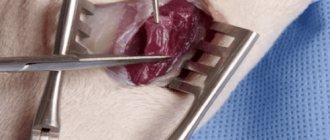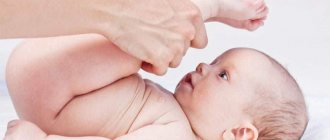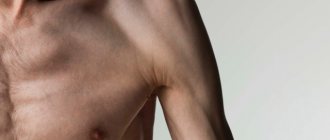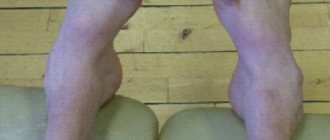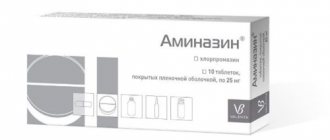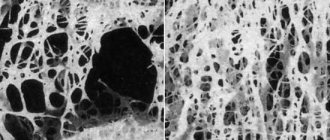Types of muscular dystrophy
In modern neurology, this disease is classified into nine different diseases. The classification of the disease is related to:
- localization of muscle disorders;
- characteristics of the disease;
- aggressiveness of development;
- age.
So, muscular dystrophy happens:
- Duchenne;
- myotonic (Steinert's disease);
- Becker;
- Erba Rota;
- juvenile form of Erb-Roth dystrophy;
- shoulder - scapular facial form (Landouzy-Dejerine);
- alcoholic myopathy;
- distal form;
- Emery-Dreyfus muscular dystrophy.
Duchenne dystrophy
The most well-known form is progressive Duchenne dystrophy (pseudohypertrophic dystrophy, merosin - negative congenital dystrophy). This type of disease manifests itself in childhood from two to five years. First of all, this disease affects the muscles of the lower extremities, which, despite a sedentary lifestyle in young patients, gradually increase in size. This feature is associated with the growth of adipose tissue instead of muscle.
On the left is a healthy child, on the right is a sick one
Gradually, as the disease progresses, it moves to the upper part and affects the muscles of the upper limbs. As a rule, by the age of twelve the little patient stops moving completely. The mortality rate of this disease is very high; approximately 85–90% of patients do not survive to the age of 20.
Males are at risk, since this disease practically does not affect girls.
Steinert's disease
It is not for nothing that Steiner’s congenital dystrophy is called myotonic, since as a result of the progression of the disease, muscle relaxation occurs too slowly after contraction (this phenomenon is called myotonia).
This disease, unlike the previous one, is common in adults aged 20 to 40 years. There are also cases of disease progression in children, usually in infancy, however, this is the exception rather than the rule.
Facial signs of myotonia (open mouth and eyelids)
The disease is not gender dependent and affects both men and women equally. It is noted that the disease manifests itself as weakness of the facial muscles, as well as the limbs. Progression, unlike Duchenne disease, occurs slowly.
A distinctive feature of the disease is the possibility of damage not only to the muscles of the limbs, but also to the internal muscles (heart muscle), which in turn poses a great danger to human life.
Becker's disease
This form of the disease also progresses for a long time, and the patient feels well for a long time. An exacerbation of the disease can occur against the background of injuries or various diseases of the nervous system, which in their course will accelerate the development of the disease.
People of short stature are at risk.
Erb-Roth disease and its juvenile form
This autosomal recessive disease develops in patients after 20 years of age, and the juvenile form occurs in children and adolescents aged 11-13 years. The progression of the disease occurs in an ascending manner, that is, the muscles of the lower extremities are first affected, and the disease gradually ascends to the upper extremities.
A distinctive feature of the disease is the presence of protruding shoulder blades, which become more pronounced and obvious as it progresses.
While walking, the patient waddles, the abdomen protrudes, and the chest moves in.
Landouzy-Dejerine disease
The scapulohumeral-facial form of this disease is the most indiscriminate type, as it affects people aged from five to 55 years. This disease is characterized by a very long development; the patient can remain able to work for up to 25 years of life with this disease.
The distinctive symptoms are damage to the facial muscles, as a result of which the patient may have problems with clarity of pronunciation due to incomplete closure of the lips. In addition, incomplete closure of the eyelids is noted.
As the patient develops, the facial muscles, muscles of the shoulders, limbs and torso atrophy.
This form does not depend on a genetic mutation.
Alcoholic myopathy
This type of disease is also not associated with gene mutations and there is only one cause of its occurrence - alcohol abuse. Patients may experience pain syndromes in the limbs associated specifically with muscle damage.
There are acute and chronic alcoholic myopathy.
Distal form
Distal muscular dystrophy is a benign variant of progressive dystrophy. As a rule, this disease is difficult to differentiate from Marie-Charcot neural amyatrophy. To separate these two diseases, an electroencephalogram of the head is required, which gives an understanding of what disease is being dealt with.
The main symptoms of the disease include atrophy of the muscles of the limbs with their subsequent emaciation. Paresis of the feet, hands, etc. is possible.
Emery-Dreyfus muscular dystrophy
This type of disease was initially not identified as a separate disease at all, since its symptoms were similar to Duchenne dystrophy. However, later, as a result of a long-term study, it was found that Emery-Dreyfus disease has individual symptoms.
Classification by location of damage
The disease is classified as rare. People under 30 years of age are at risk, usually young people. There is evidence of the manifestation of symptoms even after 30 years, but they are isolated.
The main difference between this type of disease is problems with the heart muscles, which can ultimately cause death. Cardiomyopathy with this disease is not the only difference. In addition to heart problems, patients exhibit standard signs for Duchenne dystrophy, but in a more gentle development mode.
The disease also affects children
Progressive muscular dystrophy in children develops differently and is more dangerous due to complications than primary muscle atrophy. Even a minor infection or respiratory pathology can be fatal due to the rapid development and involvement of other organs. It is sometimes too difficult to suspect muscular dystrophy; parents should be attentive to the appearance of symptoms:
- the child tries to rise on his toes when walking;
- a delay in physical and intellectual development is detected;
- damage to muscle structures begins with the spine;
- the gait changes greatly and becomes swaying;
- the child has difficulty running or climbing stairs;
- the spine begins to deform, which is why the child quickly gets tired;
- the size of muscle structures increases sharply due to filling with fat;
- the jaw and the spaces between the teeth increase;
- by the age of 13, the child loses the ability to move normally;
- cardiovascular diseases develop.
Forms of the disease may have different names, but most of them have similar symptoms.
Causes
The negative aspect of nervous system diseases is that they are difficult to study. For this reason, it is not fully known about the factors that provoke the development of one or another form of muscular dystrophy.
The main reason for the formation of most subtypes of this disease is a gene mutation, in particular the gene that is responsible for protein synthesis.
For example, Duchenne disease is directly related to a mutation of the sex X chromosome. The main carriers of the bad gene are girls who, despite its presence in their own DNA, do not suffer from this disease.
As for the myotonic form, the culprit for its occurrence is a gene located on chromosome 19.
Disease families
There are generally two main families of MDs:
- Congenital muscular dystrophy (AMD), which manifests itself in the first 6 months of life, accompanies about ten forms of pathologies of variable severity, including AMD with primary merosin deficiency, Ullrich and Walker-Warburg syndrome;
- Muscular dystrophies that appear in childhood or adulthood:
- Duchenne myopathy
- Becker myopathy
- Emery-Dreyfus myopathy (there are several forms)
- Landouzy-Dejerine myopathy
- The so-called lumbar myopathy affects the muscles around the shoulders and hips.
- Myotonic dystrophies (types I and II), which include Steinter's disease. They are characterized by myotonia - when muscles cannot relax properly after contracting.
- Oculopharyngeal myopathy
Main symptoms
The presence of a large number of different subtypes of this disease indicates differences in symptoms, however, the disease has common symptoms, which include:
- reduced pain threshold or its complete absence;
- decreased muscle tone;
- the presence of pain in the affected areas;
- systematic atrophy of skeletal muscles;
- changes in walking style;
- inability to stand firmly on your feet and move, as a result of which the patient often stumbles and falls;
- chronic fatigue;
- change in muscle size both up and down;
- the gradual loss of skills in children that they only managed to acquire and develop.
Some signals of dystrophy
Symptoms
Various forms of dystrophy (Landouzy-Dejerine, Duchenne, Becker, etc.) have their own characteristic signs of progression. But there is also a group of symptoms that are characteristic of any type of pathology:
- absence of pain syndrome;
- gradual decrease in muscle fiber tone;
- sensitivity in the affected areas does not decrease;
- skeletal muscles gradually atrophy;
- change in gait;
- frequent falls due to weakness of the leg muscles;
- constant fatigue;
- a characteristic symptom of the progression of the disease is a change in muscle size;
- Muscular dystrophy in children is manifested by a gradual loss of physical strength. skills that they had already developed before the pathology progressed.
Diagnosis of muscular dystrophy
Diagnostic measures for such a disease are extensive, since there are a large number of diseases from which it is necessary to differentiate the disease.
At the initial stage, the doctor will definitely examine the patient’s medical history, clarify the symptoms, daily routine, etc. This data is required to draw up a plan for subsequent diagnostic measures, which may include:
- electromyography;
- scraping of muscle tissue for analysis;
- genetic testing;
- blood and urine tests;
- additional consultation with an orthopedist, gynecologist and therapist.
It is worth noting that the later the disease manifests itself, the better for the patient, since early symptoms in most cases end in death.
Treatment
Treatment of muscular dystrophy is a complex and protracted process, however, currently no medicine has been created that completely heals the patient. All measures are aimed at making the patient’s life easier and restoring some lost abilities.
To slow down the development of the disease, the following drugs are prescribed:
- corticosteroids;
- vitamins B1;
- adenosine triphosphate (ATP).
In addition, to slow down the development process, fetal stem cells are used, which slow down the process of degeneration.
In addition, the following are prescribed as preventive measures:
- massage;
- physiotherapy;
- breathing exercises.
In addition to standard treatment options, it is important to constantly be guided by three main components in the process of life:
- Adequate physical activity.
- Timely psychological support.
- Dieting.
Physical activity
A person’s lack of desire to fight an illness has a negative impact on the body. Judge for yourself, passivity and reluctance to move depresses the already damaged muscular system. The muscles need to be given a load, since without load, degenerative processes begin to occur faster, thereby progressing at a faster pace.
Moderate physical activity and the use of supportive devices will be an excellent help in the fight against the disease.
If you have muscle pain, swimming, yoga, and stretching exercises are perfect.
Psychological support
Psychological support from the environment is important for a sick person. And if the illness is as serious as this one, even more so. For some, ordinary support from friends and family will be enough, while others may require qualified psychological help.
It is important to make it clear to such a person that he is not left alone with his problem. He must understand that he has someone to turn to, there are people who empathize and support him.
Diet
When it comes to diet and diet, there is a common belief that following an anti-inflammatory diet can slow the progression of the disease. This diet reduces inflammation, reduces glucose levels, removes toxins from the body and nourishes it with nutrients.
The essence of this diet is as follows:
- Refusal of foods containing “bad” fats and replacing them with “good” ones, introducing unsaturated fats into the diet, which are found in olive, flaxseed, sesame oil, and avocado.
- The use of meat and fish in the production of which did not use antibiotics or hormones.
- Complete removal of refined sugar and gluten from the diet.
- Eating the following foods - bok choy, broccoli, celery, pineapple, salmon, beets, cucumber, ginger, turmeric and other foods that have anti-inflammatory properties.
- Dairy products are only allowed based on sheep and goat milk.
- It is acceptable to drink herbal teas, lemonade, kvass, fruit drinks and natural juices.
Examination for myopathy
Clinical signs characteristic of muscular dystrophy are symptoms of flaccid paralysis in different muscle groups of a sick person without signs of damage to motor neurons and peripheral nerves. Neurologists around the world cannot explain this.
Doctor Nikonov
My opinion: protein swelling between muscle fibers makes muscle movement impossible.
Not knowing this phenomenon bewilders doctors all over the world: “How is this possible? The muscle fiber is intact and undamaged. “Are motor neurons and peripheral nerves intact, in their proper places, and perfectly transmitting impulses from the brain to the muscles and from the muscles to the brain, but movements are difficult?”
Neurologists prescribe electromyography. And again it’s a mystery to them: there are no changes in the structure of the muscle fiber. A decrease in the amplitude of the M-response, increased interference and polyphasic potential indicates difficulty in muscle movement without any pathology!
Prognosis and complications
Depending on the type of disease, the prognosis may be different, but nevertheless, several possible complications that arise from this disease can be identified.
- cardiac disorders
- rachiocampsis
- decrease in the patient's intellectual abilities
- decreased physical activity
- respiratory system disorders
- lethal result
So, muscular dystrophy is a rather dangerous and incurable disease, so future parents need to be deeply responsible when planning a pregnancy. Take care of yourself and your future children!
Etiology
So far, scientists have not been able to accurately determine the true reasons that trigger the pathological mechanisms that provoke pathology. But it is already known for sure that the basis of all the causes of this pathological condition are mutations of the autosomal dominant genome, the main function of which is the synthesis and regeneration in the human body of a specific protein responsible for the full formation of muscle fibers.
Depending on which chromosome in the human genetic code was subject to the mutation process, the location of the disease will develop:
- In most clinical situations, the X chromosome in the human genome undergoes mutation. In this case, Duchenne muscular dystrophy begins to progress. It is this form of the disease that is most often diagnosed. It is noteworthy that if a representative of the fair sex has a defective chromosome in her genome, then there is a high probability that she will pass it on to her descendants. But it also happens that she will not show any symptoms of the disease at all;
- the cause of the motonic variety of the disease is the formation of an abnormal genome related to chromosome 19;
- Separately, it is worth highlighting muscle underdevelopment, which is completely unrelated to abnormalities in the sex chromosome. This group includes 2 types of disease: shoulder-scapula-face, lower back-limbs.
